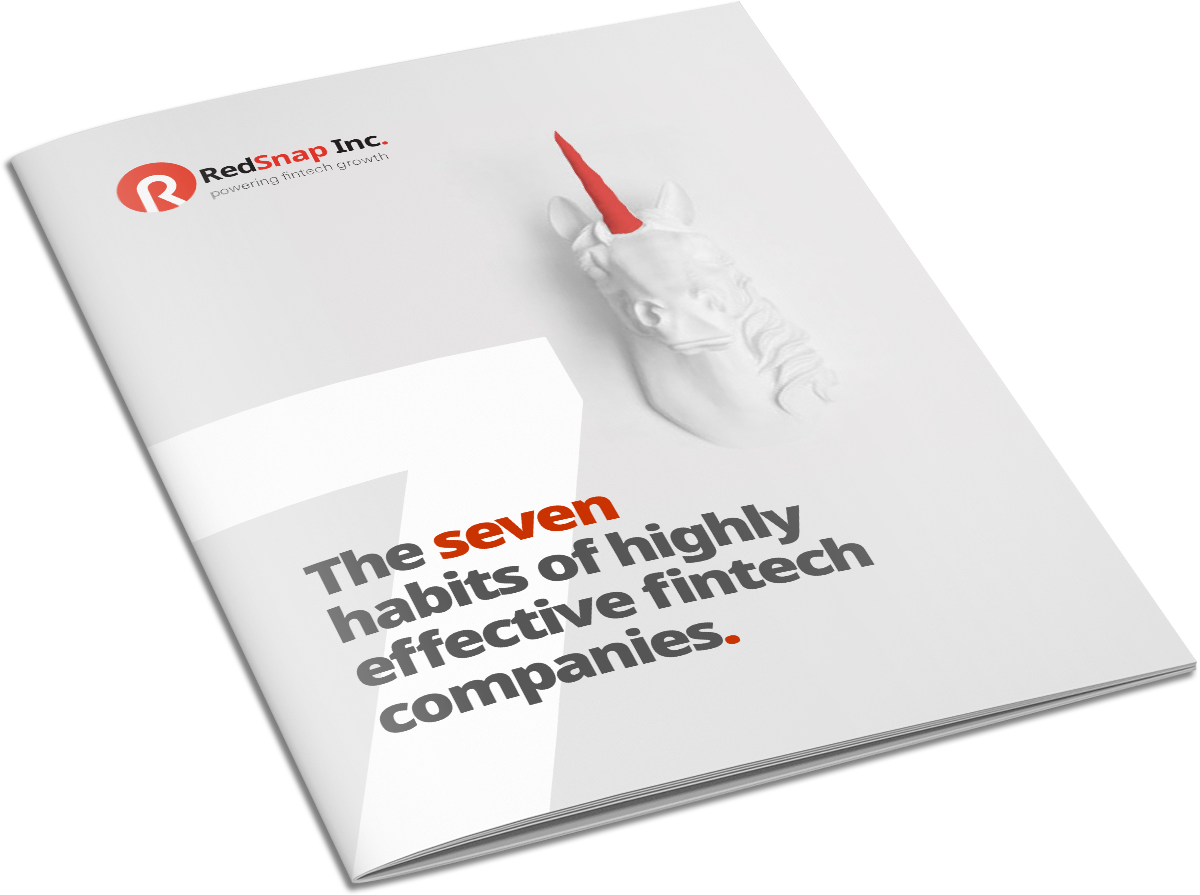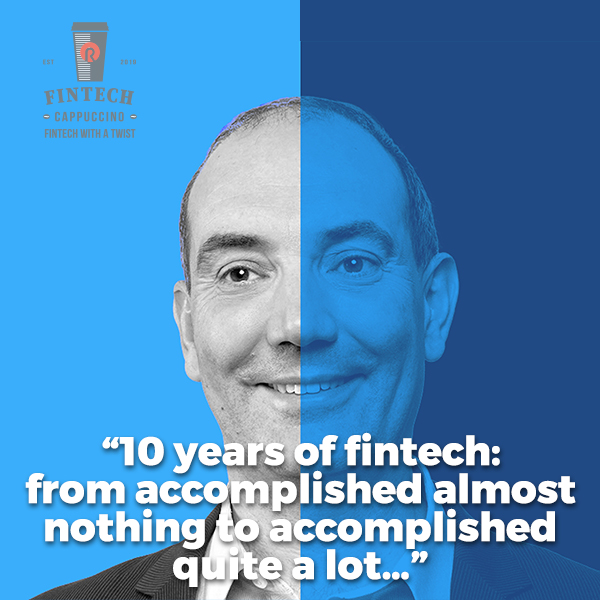The foundation of any successful go to market strategy ...
Marketing
Sales
Automation
For business leaders
For sales leaders
For marketing leaders
RedSnap Inc.
RedSnap Inc. is an agency for fintech branding, marketing & sales. We power fintech growth by aligning your marketing & sales. We develop appealing brands, impactful marketing campaigns and successful sales strategies that truly drive growth. Let’s simply say: we make sure your (potential) clients see you, like you and buy you.
For fintechs
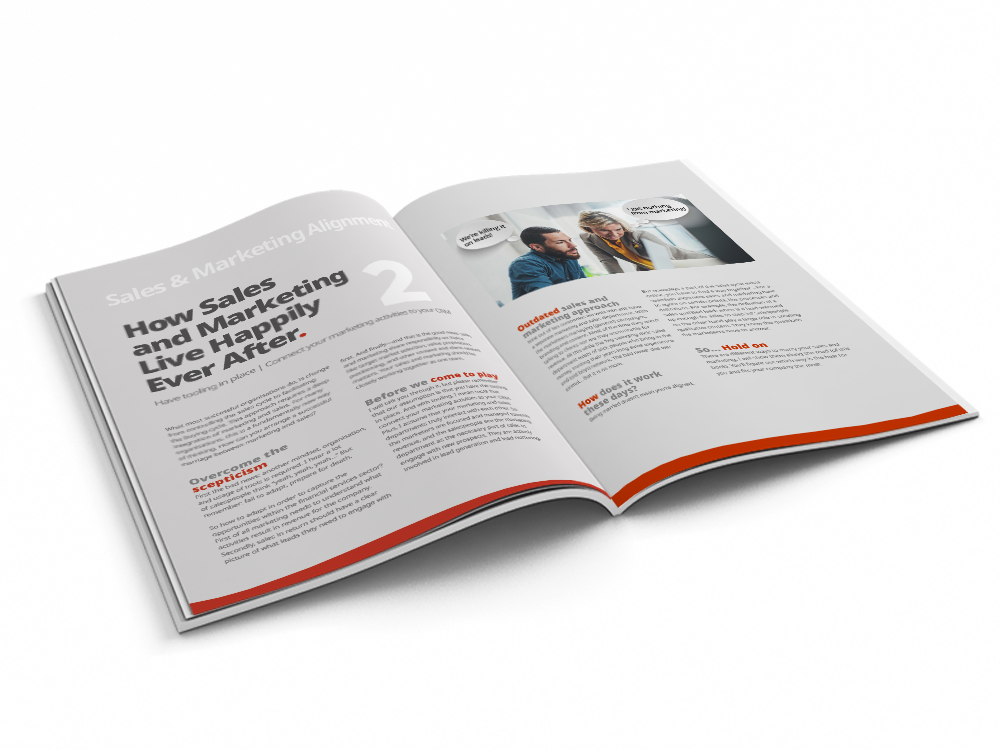
Download here.
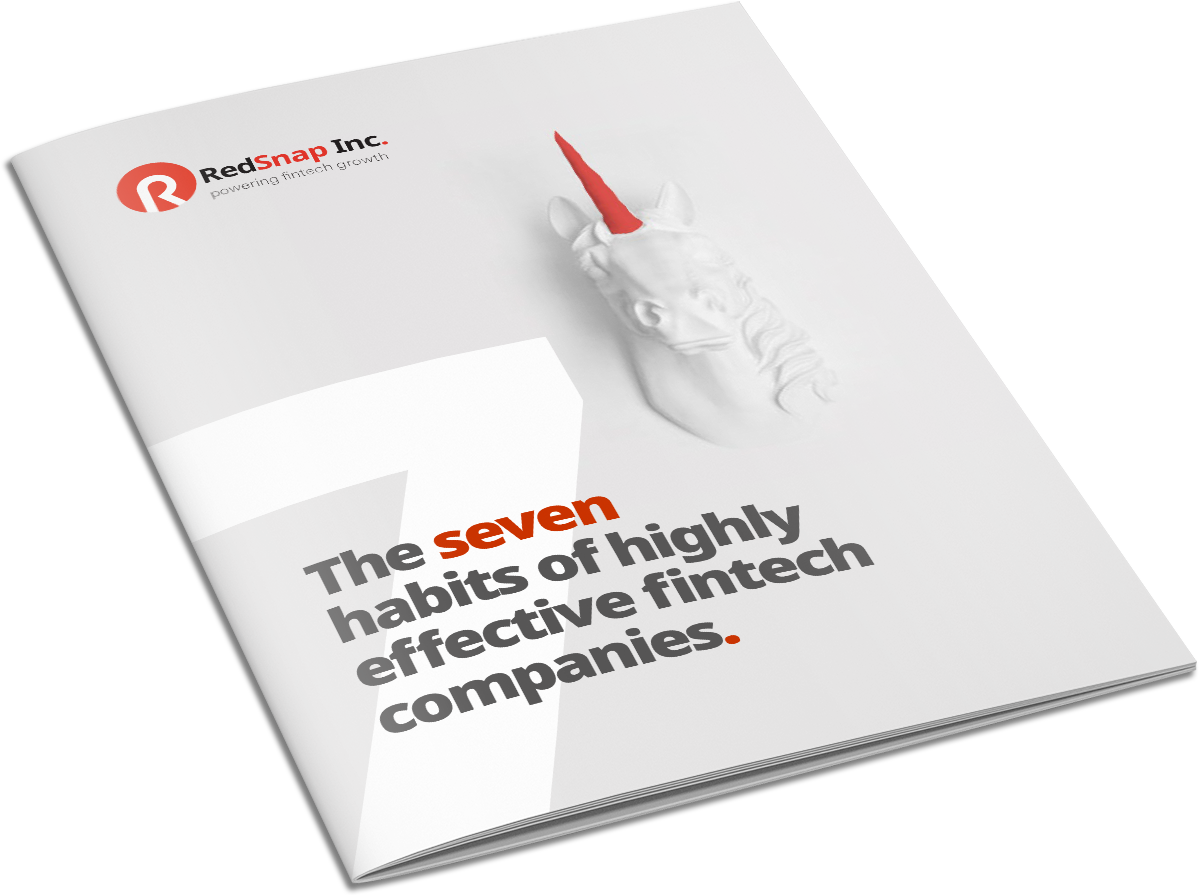
eBook 7 habits of highly effective fintech companies
Fintech
Mind the Gap!
Finding your Target Audience is (not) a day at the beach.

Most Fintechs face the same challenges in finding their target audience. They have a fantastic product which solves a problem for a bank. But how do they enter the considerable and risk-averse market of banks? A challenge like this isn’t a day at the beach, or is it?
This article is an informed intuition rather than an analytical exercise. So tag along and let your thoughts run freely. The point of this article is that you understand how to find a target audience.
First of all, you need to know why a target audience is so vital for fintechs that offer innovative solutions.
Most companies get into trouble because they focus on a target market or target segment rather than on a target customer.
They forget to define to whom they are talking. Markets are impersonal and what you need here is the opposite.
So let’s take a look at a market in a different and, in my humble opinion, better way. What if we define a market as (potential) clients of your company that reference each other? I’m not necessarily talking about geographical nearness here. Because in practice, it happens that neobanks talk to neobanks, Tier 1 banks to Tier 1 banks and insurers to insurers. All types of financials have their own ecosystem.
Keep the ecosystems in mind when you want to define your target market.
These networks will be the vehicle for promoting and selling your product by word of mouth. Now the real challenge is to enter these markets that are dominated mainly by risk-averse pragmatists. i.e., bankers. They mostly depend on references when they try something new. But… How do you get endorsements or a great implementation practice when you are new to a market??
The answer seems counterintuitive, but it is essential: focus, focus and focus. Or, in old marketing terms: segment, segment and segment.
You can do so in a couple of steps:
- Find out which problem you exactly solve.
- Cluster the potential clients suffering the same pain and find out if they reference each other.
Add the outcome of both steps, and you have found your first target market. I know you’d rather sell your excellent product to everyone at once, but first, you have to enter the market. You do this by creating a beachhead market, just like the allied troops entered the beachheads of Normandy to enter mainland Europe. Once you’ve conquered the beachhead markets, you have a base to invade the whole market.
Finding your beachhead is essential for your success.
The key is to keep focussing on your target market so you can create cases and ambassadors that spread the word within their ecosystem. Do not get distracted by other ‘opportunities’ because these additional opportunities distract you and will bring you further from your goal: to become a market leader. Pragmatists, like most customers in the finance world, want to buy their products from market leaders. Even if the market (defined by you) is very, very small.
The journey from finding your first target audience to becoming a market leader may not seem like a day at the beach. But by entering and focussing on your beachhead market, it can become a lot more effective.
In our next blog we will talk about the buying committee and how to get to know them.
The Series
Mind the Gap.
-
From lead to deal1: The sales game has changedFacilitate the buyer's journey, change your mindset
Lack of structure and a lot of creativity. Are these the characteristics that come to mind when asked to describe a great salesperson? Not really right? Yet, the best sales people I know in the industry are not very structured, not very organised nor disciplined.
-
Sales & Marketing alignment2: How Sales and Marketing live happily ever afterHave tooling in place | Connect your marketing activities to your CRM.
In our article 'From lead to deal: The sales game has changed' we observed that successful organizations changed from controlling the sales cycle to facilitating the buying cycle. This approach requires a deep integration of marketing and sales. For many organizations this is a fundamentally new way of thinking. How can you arrange a successful marriage between marketing and sales?
-
Branding & identity3: Who do you think you are?How to get your branding in place.
Welcome to our ‘mind the gap’ article about brand & identity. Let’s first make sure we are all on the same page about the terminology because the language used is often misunderstood. Brand: Your brand is a combination of a visual identity, tone of voice and behaviour - most visibly expressed through your logo, taglines and images used in communication campaigns.
-
Positioning4: Finding the right positionPositioning is all about differentiation.
Welcome to our ‘mind the gap’ article about positioning. Here we will discuss the importance of positioning and how it can help you stand out from your competitors. How many times have you walked into a bank to pitch for a piece of business only to be told ‘we already have the functionality you offer’ or ‘we solved that problem a long time ago’.
-
Value proposition5: Value proposition: the extra mileWhat problem do we solve and for whom?
In this ‘mind the gap’ article we will discuss the value proposition and how it will help your fintech sales efforts in the financial services sector. That is, if applied correctly... Going the extra mile...
-
Buying committee7: Not a shopaholicGet to know the buying committee
Before banks buy your product (or service), you first need to convince the buying committee. The people on this committee make sure that the banks money is well spent. Here is how you deal with them in order to close a deal.
-
Competition analysis8: The illusion of the special snowflakeNever underestimate your competition
A lot of fintechs might feel the urge to skip the competition analysis. Simply because they feel they don’t have any competitors. Their product is a unique solution, so why bother with looking at what others do? Well, fintechs should worry because there is always some competition; ‘special snowflake-ness’ is an illusion.
-
Sales & Engagement approach9: Stop selling. Start giving!Just selling for the sake of it has and will never work.
It might come as a surprise to you, but focusing on selling is sometimes the worst thing a sales organisation can do. A much better approach is to focus on the problem you solve for your customers and how can you help them navigate the deal through their own organisation.
-
Pipeline Optimization10: Hot or not?Optimize your sales pipeline and find the most effective way from lead to deal.
Phrases like 'pipeline optimization' that we use in our Sales & Marketing businesses do not always sound exciting. Nevertheless, the topic of pipeline optimization is hot as can be! If you optimize your sales pipeline, you'll find the most effective way from lead to deal. Sounds like a plan, but how do you do it?
-
Sales Enablement11: Help your sales star winSales enablement is everything you need to do to enable your sales people to sell more
Let's have a look at 'Sales Enablement’. There seem to be many misunderstandings about this topic, but most companies don't even notice it.
-
Winning Sales12: Winning Sales is not everything: it is the only thingIt is not that companies forget about sales, but rather that they don't know how to play the sales game.
Sales is like playing tennis. Nobody cares about how many balls you hit, or services you make, how hard you hit the ball or how many miles you ran on the court. At Wimbledon, it is all about the performance: winning the game. And that's the same with winning sales.
The Ultimate Guide to Winning Sales in Fintech.
In this e-book, you'll learn about the one important question you need to focus on: how to win the market, as a team. Get your own copy and conquer the fintech world!
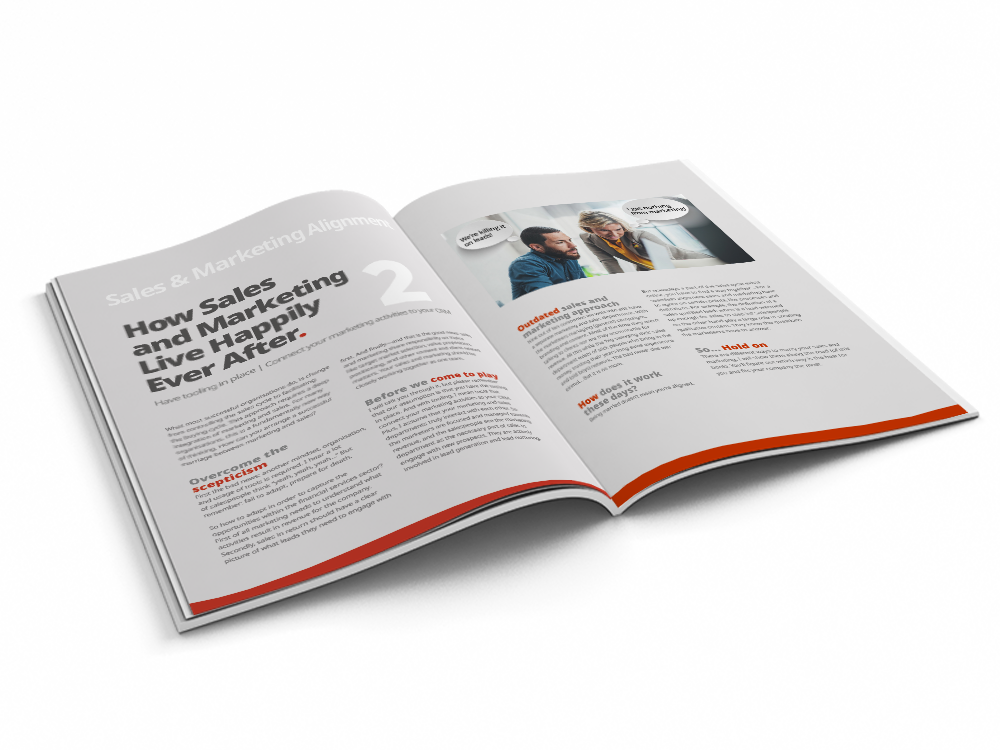
The 7 habits of highly effective fintechs
What are the 7 key habits that are continuously practised by successful fintechs? Follow the habits outlined in this e-book and you will be well on the way to growth.
